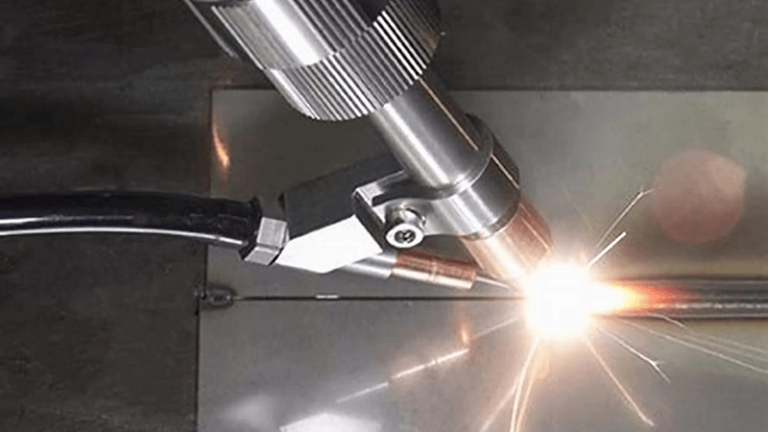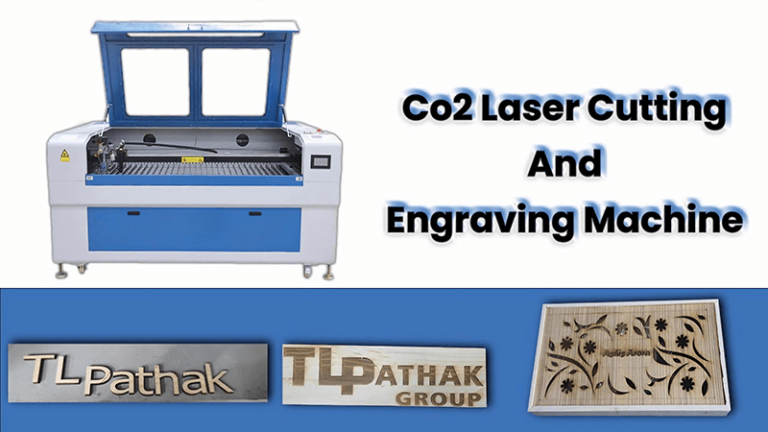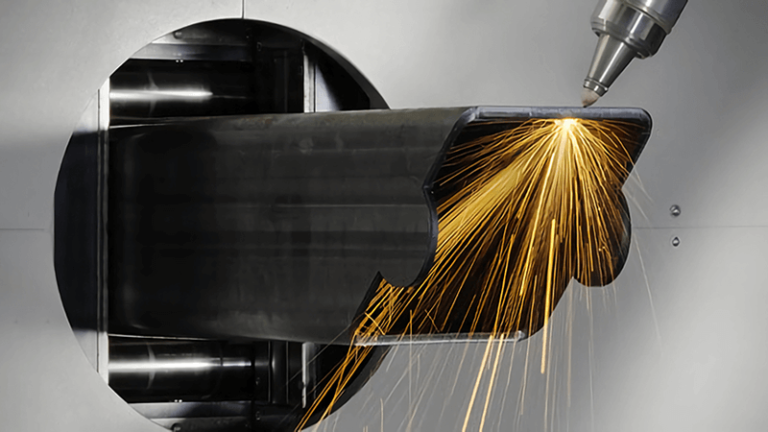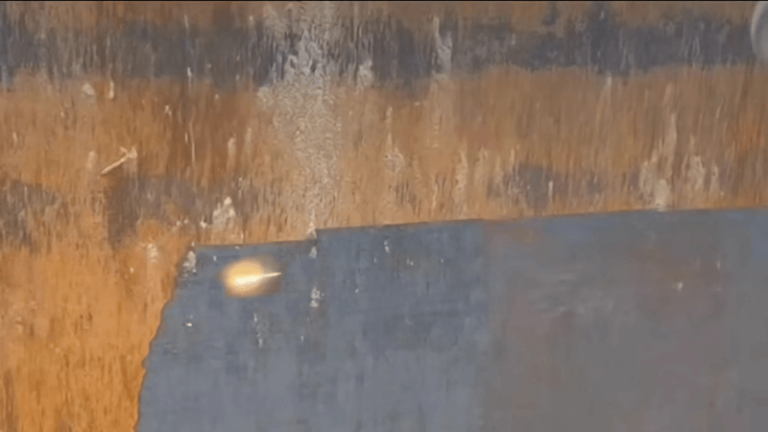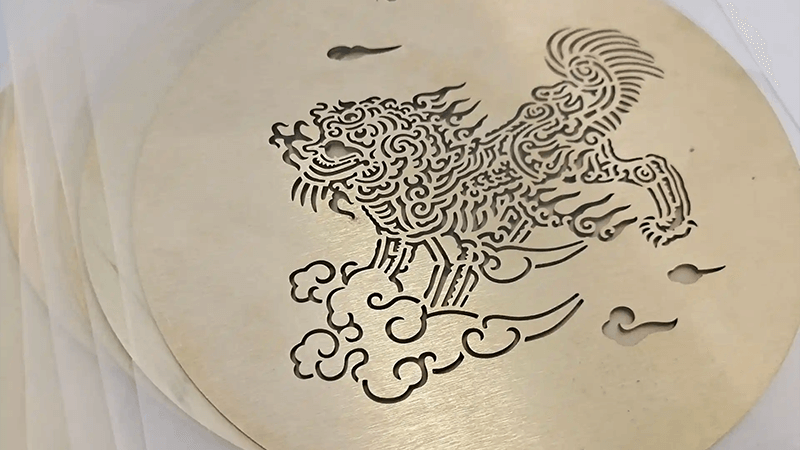
Ever wondered how intricate designs end up engraved perfectly on anodized aluminum? Well, you’re not alone. Many people in industries like electronics, automotive, and signage are discovering the magic of metal laser engraving. But how does it really work? And why is anodized aluminum the ideal choice for such tasks?
The process of engraving anodized aluminum with lasers is more than just a fancy tech trick. It’s a precise, durable, and efficient way to create high-quality marks on metal surfaces. Laser engraving uses high-powered beams of light to etch designs, logos, text, or images onto the surface of anodized aluminum. Metal laser engraving on anodized aluminum is an effective technique that combines precision with durability. By understanding how it works and following best practices, you can achieve high-quality results suitable for various applications in industries such as manufacturing, automotive, and consumer goods.
The result? A permanent, high-contrast mark that can withstand harsh conditions. No wonder it’s so popular!
Ready to dive deeper into the world of metal laser engraving on anodized aluminum? Keep reading!
What is Anodized Aluminum?
Anodized aluminum is aluminum that has been treated with an electrochemical process to create a protective oxide layer on its surface. This layer is not only tough but can also be dyed in various colors. But why does anodizing matter for engraving? The anodized surface provides a better "canvas" for laser engraving because it allows for sharper, more precise designs while enhancing durability. Unlike regular aluminum, anodized aluminum won’t easily wear down or fade from regular use.
You might be wondering: why not just use regular aluminum? The anodized layer ensures that the engraved design won’t fade over time, even under harsh environmental conditions like high temperatures or exposure to chemicals. So, it’s perfect for applications that demand high durability.
Anodized aluminum is more suitable for laser engraving than regular aluminum.True
The anodized layer provides a better 'canvas' for laser engraving, offering sharper, more precise designs and enhanced durability.
Laser engraving on anodized aluminum can cause the material to wear down faster than traditional engraving methods.False
Laser engraving is non-contact and ensures no material is lost unnecessarily, making it less likely to cause wear compared to traditional methods like rotary engraving.
How Does Metal Laser Engraving Work on Anodized Aluminum?
Laser engraving is pretty straightforward, but on anodized aluminum, it’s a bit of an art. The laser machine uses a concentrated beam of light to vaporize the anodized layer, revealing the aluminum underneath. The result is a contrast that’s visible to the naked eye, and the design is etched permanently.
So, what makes laser engraving different from traditional engraving methods? Traditional methods like rotary engraving or chemical etching can cause more wear on the material, whereas laser engraving is non-contact, ensuring no material is lost unnecessarily. Plus, lasers can create extremely intricate details with much greater precision, even at microscopic levels.
When it comes to settings, you'll need to adjust your machine for optimal results. Lower power and higher speed tend to work well for anodized aluminum, but it will vary depending on your specific needs. The goal is to focus the laser beam tightly on the anodized layer without damaging the underlying aluminum.

How to Achieve High-Quality Black Laser Marking on Anodized Aluminum
-
Laser Parameter Adjustment:
- Fiber Laser: Typically the best choice as it provides high energy and excellent beam quality.
- Power Settings: Adjust the power based on the thickness and type of aluminum. Higher power helps produce a more prominent black marking.
- Speed and Frequency: Slower marking speeds and appropriate laser frequencies (typically 50-200 kHz) can enhance the marking effect.
- Marking Depth: Adjust the focal length to control the marking depth. A moderate depth can improve the contrast.
-
Anodized Surface Treatment:
- The anodized aluminum has a thin oxide layer on the surface. The laser beam interacts with this oxide layer, causing a nanostructure effect that increases its light absorption, making the surface appear black.
-
Specialized Equipment and Post-Treatment:
- MOPA Fiber Laser: This type of laser is especially suited for black marking on aluminum, capable of directly achieving the black effect on aluminum.
- Post-Treatment: After marking, cleaning agents can be used to remove any residue from the surface to ensure the clarity and durability of the marking.
How to Choose the Right Laser Marking Machine for Anodized Aluminum?
When selecting a laser marking machine for anodized aluminum, several key factors should be considered to ensure the right choice based on the specific marking requirements. Here’s how to make an informed decision:
-
Laser Type
- Fiber Laser Marking Machine: Fiber lasers are highly suitable for anodized aluminum. They produce high-quality laser beams with small focal spots, enabling precise and fine markings. The typical wavelength of 1064nm is well absorbed by metals, making it effective for anodized aluminum surfaces. Fiber lasers are fast, efficient, and ideal for creating clear and delicate patterns and text on anodized aluminum.
- MOPA Laser Marking Machine: The MOPA (Master Oscillator Power Amplifier) laser offers better control over the laser pulse, resulting in more refined marking, particularly on anodized aluminum’s oxide layer. It is particularly useful for applications requiring high precision, such as marking electronics, precision instruments, or decorative components. However, MOPA lasers tend to be more expensive, and the marking speed might be slower compared to fiber lasers.
-
Power Selection
- The power of the laser should be chosen based on the hardness, thickness, and marking requirements of the anodized aluminum.
- Low Power (20W - 50W): If the marking is simple, such as product numbers, production dates, or logos, lower power is sufficient. This range works well for basic markings without the need for deep engraving or large-area coverage.
- Higher Power (50W - 100W): For deeper engravings, high contrast, or larger markings, higher power is necessary. This is also required for large surface areas or for more intricate and precise work.

- Marking Area
-
The size of the marking area should correspond to the components you plan to mark.
- Small Parts: For small components like connectors, screws, or small plates, a laser marking machine with a marking area of approximately 100mm x 100mm will suffice.
- Large Parts: For larger anodized aluminum sheets or panels, a machine with a larger marking area, such as 300mm x 300mm or larger, is needed to cover the entire surface efficiently.
-
Budget
-
There is a significant price difference between various types and configurations of laser marking machines. Fiber laser machines are generally priced moderately and offer a good balance between performance and cost. On the other hand, MOPA laser machines, due to their advanced capabilities and finer control, tend to be more expensive.
-
When selecting a machine, it’s important to balance performance with cost to ensure that it meets the marking needs within the set budget. Consider long-term investment costs, as well as the machine's durability and maintenance needs.
-
-
Additional Considerations
- Maintenance and Support: Look for machines with strong after-sales support and easy maintenance procedures to reduce downtime and extend the life of the equipment.
- Speed vs. Precision: Depending on whether your priority is faster production or highly detailed markings, you may prioritize one feature over the other (e.g., a higher-speed fiber laser or a MOPA laser for superior detail).
Laser engraving on anodized aluminum is a complex process that requires adjusting settings like power, speed, and frequency.True
Optimal results for laser engraving on anodized aluminum require careful adjustments to laser power, speed, and frequency.
Regular aluminum is often preferred over anodized aluminum for high-durability applications.False
Anodized aluminum is preferred for high-durability applications because its oxide layer helps prevent fading and wear over time.
Laser Marking Black Laser Marking on Aluminum for Anodizing
-
Selecting the Right Equipment and Parameters:
- Device Choice: Use a fiber laser due to its high beam quality and conversion efficiency, making it ideal for aluminum marking.
- Laser Power: The recommended power range is typically 30% - 100%. For thinner aluminum, lower power (30% - 50%) may be sufficient, while thicker aluminum requires higher power (90% - 100%) for clearer markings.
- Marking Speed: A speed range of 300 - 1500 mm/s is ideal. Slower speeds allow more interaction time between the laser and aluminum, creating clearer black marks, but may reduce productivity.
- Laser Frequency: A frequency range of 20 - 200 kHz is recommended. Lower frequencies are better for deep marking, while higher frequencies are ideal for surface marks or higher resolution needs.
- Focal Length: Typically between 50 - 100 mm to ensure the laser beam focuses well on the aluminum surface, producing optimal marking results.
- Marking Depth: The typical range is 20 - 50 μm. Deeper marks require higher power and slower speeds but avoid over-marking, which can degrade the aluminum surface.
-
Important Considerations During Marking:
- Test Runs: Before performing the actual marking, it's advised to test on scrap material to fine-tune parameters for the best combination. Record the settings for future reference.
- Material Impact: The marking results can be influenced by the alloy composition and surface treatment of the aluminum, so consistent material batches are important.
-
Post-Processing:
- Cleaning: After marking, use a cleaner to remove any residual material from the surface, ensuring the clarity and durability of the mark.
- Anodizing Process: Anodizing further enhances the contrast and durability of the black mark. This process creates an oxide layer on the aluminum surface, improving corrosion resistance and marking longevity.
-
Special Considerations and Tips:
-
White Aluminum: For highly reflective aluminum materials, such as white aluminum, achieving a very black mark might be difficult. In such cases, a two-step process (first a white sweep, then a gray-black mark) may yield better results.
-
Batch Variations: Differences in alloy composition or oxidation levels across aluminum batches can impact the marking effect. Adjust parameters accordingly.
-
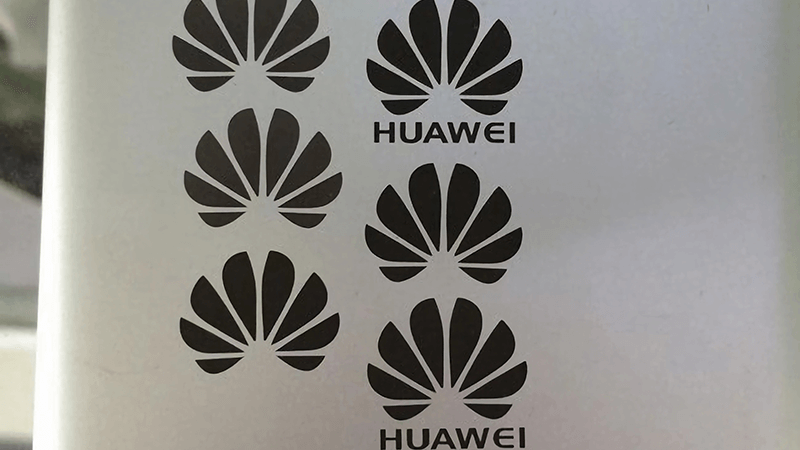
- Achieving Anodized Black Marks:
While fiber laser marking itself does not directly complete the anodizing process, it can serve as a preliminary marking method. After laser marking, anodizing can be applied to further enhance the contrast, durability, and corrosion resistance of the black marks.
Brief Overview of the Anodizing Process:
- Pre-Treatment: Clean the aluminum surface to remove oils, dirt, and oxidation.
- Electrolytic Process: Immerse the aluminum in an acidic electrolyte solution and apply current to form an oxide layer.
- Dyeing and Sealing: After anodizing, the marking's black effect can be intensified through dyeing, and sealing further increases durability.
Why is Anodized Aluminum Ideal for Laser Engraving?
There’s no shortage of advantages when working with anodized aluminum for laser engraving. First off, the anodized layer makes engraving more durable. Unlike paint or ink, laser engraving won’t peel off or fade. That makes it the go-to solution for industries like electronics, where the engraved parts may face a lot of wear and tear.
Additionally, laser engraving on anodized aluminum is incredibly precise, which means you can create intricate designs that stand the test of time. Whether it’s a logo for a product or detailed artwork on a custom part, the results will be sharp and long-lasting.
Another major advantage is that anodized aluminum can handle a range of colors when engraved, making it suitable for applications that require both functionality and aesthetics.
Common Applications of Laser Engraving on Anodized Aluminum
Laser engraving on anodized aluminum has endless applications. In industries like electronics, anodized aluminum is used in the production of circuit boards, housings, and custom parts. Laser engraving allows manufacturers to etch serial numbers, logos, or specifications with precision.
In the automotive industry, parts like engine components or panels are often engraved with important information to ensure quality control and traceability. And for consumer goods, anodized aluminum makes a perfect surface for engraving on personalized products such as gadgets, pens, and even home décor.
The versatility of laser engraving on anodized aluminum also extends to art and customization. Artists use this method to create intricate, detailed designs on metal surfaces, ensuring that the final piece is durable, high-quality, and unique.
Fiber lasers are typically the best choice for laser marking anodized aluminum.True
Fiber lasers provide high energy and excellent beam quality, making them ideal for marking anodized aluminum with precise, durable results.
Traditional engraving methods like rotary engraving are more precise than laser engraving.False
Laser engraving offers greater precision and can create extremely intricate details, even at microscopic levels, which traditional methods cannot achieve as easily.
Best Practices for Metal Laser Engraving on Anodized Aluminum
Achieving the best results starts with preparation. Make sure the anodized aluminum is clean and free of any oils, dirt, or contaminants. This will ensure that the laser beam can etch a clean and precise design.
Next, let’s talk about machine settings. For anodized aluminum, you’ll typically want to use a lower power setting on your laser engraver. This prevents excess heat from damaging the material. You may also want to adjust the speed and frequency depending on the depth and complexity of your design.
Additionally, you should always run tests before starting a full production run. This will help you fine-tune your settings to match the specific characteristics of the anodized aluminum you're working with.
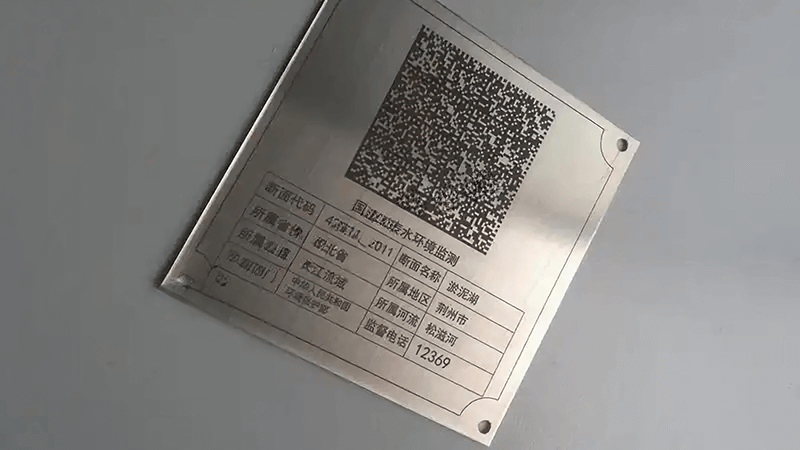
Safety and Maintenance Tips
Safety is crucial when working with laser engraving machines. Always ensure that you are working in a well-ventilated area and wear the appropriate safety gear, such as protective eyewear.
Regular maintenance of your laser engraving machine is essential for ensuring long-term performance. Clean the lens and mirrors regularly to maintain a focused laser beam. Also, ensure that the exhaust system is functioning properly to remove any fumes created during the engraving process.
Properly storing anodized aluminum materials and handling them with care will also help maintain the quality of your engravings.
How to Choose the Right Laser Engraving Machine for Anodized Aluminum
Choosing the right laser engraving machine for anodized aluminum involves considering several factors. First, you’ll want to look at the power of the machine. Typically, fiber lasers or CO2 lasers are great for anodized aluminum, but the specific power will depend on the thickness and type of anodizing on the material.
You’ll also want to consider precision. Machines with higher resolution capabilities are better for engraving fine details, while others might be more suitable for larger or less intricate designs.
Lastly, don’t forget to consider your budget. Investing in a good quality laser engraving machine can save you money in the long run by ensuring high-quality results and reducing the need for frequent repairs.
Conclusion
Laser engraving on anodized aluminum is a powerful, cost-effective, and precise way to create permanent marks on metal surfaces. With its ability to withstand wear and tear while maintaining intricate designs, it’s a technique that’s used in industries ranging from electronics to art. By choosing the right equipment and following best practices, you can ensure high-quality results every time.
Interested in laser engraving equipment? Kirin Laser has just the solutions you need! Contact us to get the full solutions for all your need and the right machine for your appllicartions.
References:
- "A Complete Guide to Laser Engraving on Metal: Why You Should Consider It?", from Kirin Laser.
- "How to Choose the Right Laser Engraver Machine for Your Business", from Kirin Laser
- "The Benefits of a Laser Marking Engraving Machine for Industrial Use", from Kirin Laser.
- "Ultimate Guide to Choosing the Best Laser Engraving Machine", from Kirin Laser.
- "Why Custom Firearm Marking with Lasers?", from Kirin Laser.
- "Top Applications of Laser Marking Engraving Machines in Manufacturing", from Kirin Laser.
- "Knowledge About Laser Engraving Anodized Aluminum That You Can’t Learn From Books", from JPT.
- “A Complete Guide to Aluminum Laser Engraving”, from KDM.


